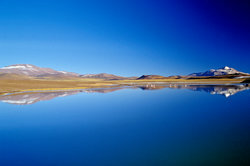Correct use of polarization filters in photography
Many people indulge in photography in their free time. It is often difficult, especially for amateurs, to keep track of which accessories are necessary and which are not. An investment that you should definitely make is what is known as a polarizing filter. But what is it and how do you use it?

This is how a polarizing filter works
- A polarizing filter consists of a polarizing film that is enclosed between two filter glasses. The filter only lets through the light of a certain (changeable) vibration level and absorbs the light of other vibration levels.
- A general distinction is made between linear and circular polarization filters. Both filters are identical in effect. However, in most cases you will want to use a circular polarizing filter because it is a Reliable exposure measurement on the part of the camera enables, which is not the case with the cheaper linear variant the case is.
- Unlike other filters, polarizing filters can usually be rotated. This rotation can be used to increase or decrease the effect of the filter. Experiment with this extensively to get an overview of the range of possible results.
So you can use the polarizing filter optimally
- The polarizing filter is especially famous for being able to swallow reflections due to its absorption properties. In plain language, this means that you can remove reflections from glass with it - directly when taking the picture, without subsequent image processing. However, this property does not apply to metals, but it does apply to water.
- If you take landscape photos frequently, the polarizing filter will also become your loyal companion. Namely, it has the property of defining saturation Colours to increase. In this way, the sky in your pictures will literally shine with blue, while green motifs such as grass or leaves appear much stronger.
- But it's not just blue sky that suddenly creates a great motif. Thanks to the filter, the contrast between the sky and the clouds is increased, which further enhances the visual impact of the image.
- You can also combine the polarizing filter with other filters. You risk that the outer edges are a little underexposed (due to the filter height), but you get fascinating color effects.
- If you buy a polarizing filter, make sure that its thread also fits yours Lenses fits, or at least those that you will use with the filter (wide-angle and normal focal length are particularly recommended). By the way, a polarizing filter is rather unsuitable as a permanent lens protection because, in contrast to UV filters, it reduces the amount of incident light. So use it in a targeted manner.
CPL filters and the effects - useful information for amateur photographers
A polarization filter is sometimes used in photography as a CPL filter ...
How helpful do you find this article?



